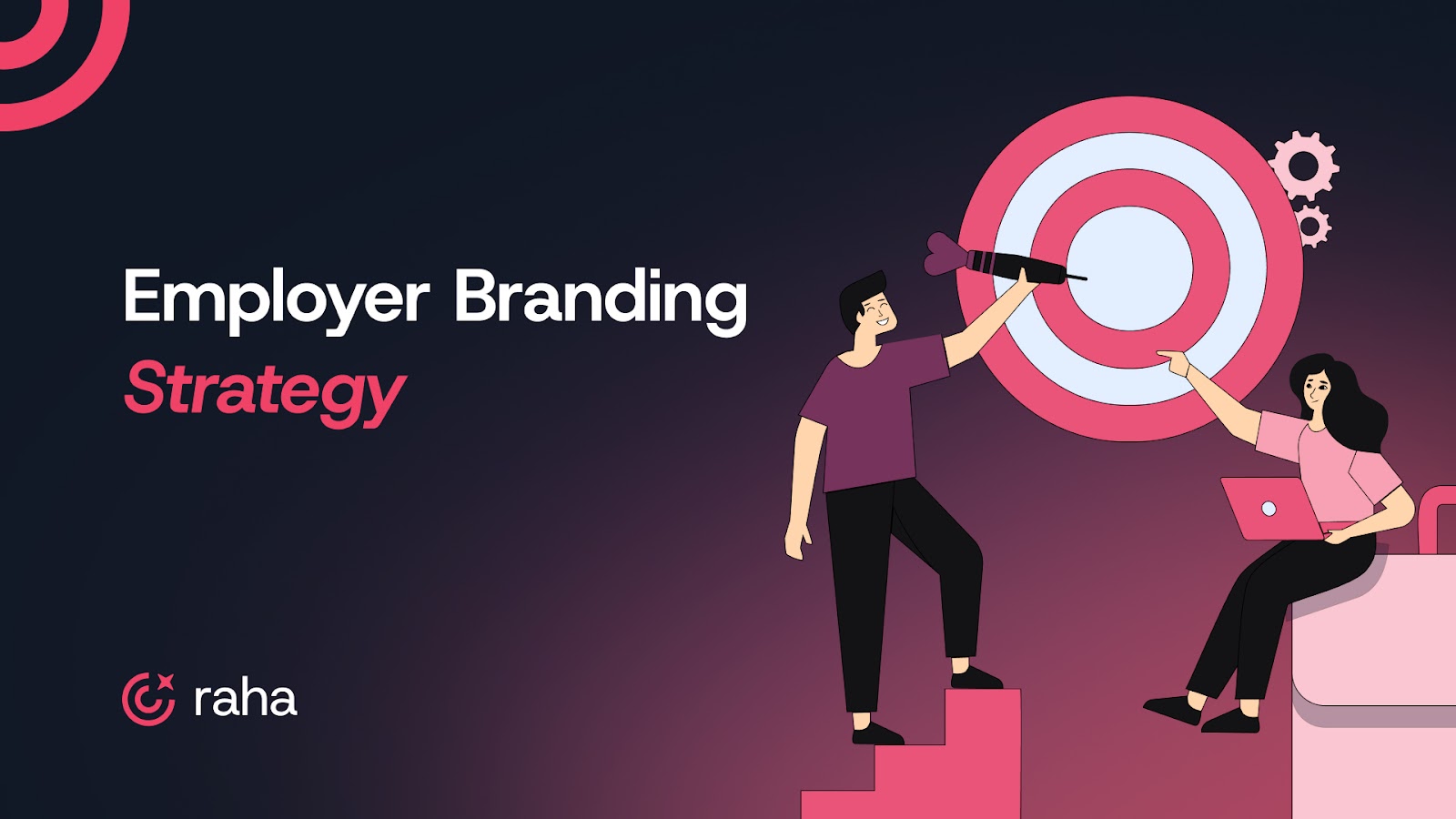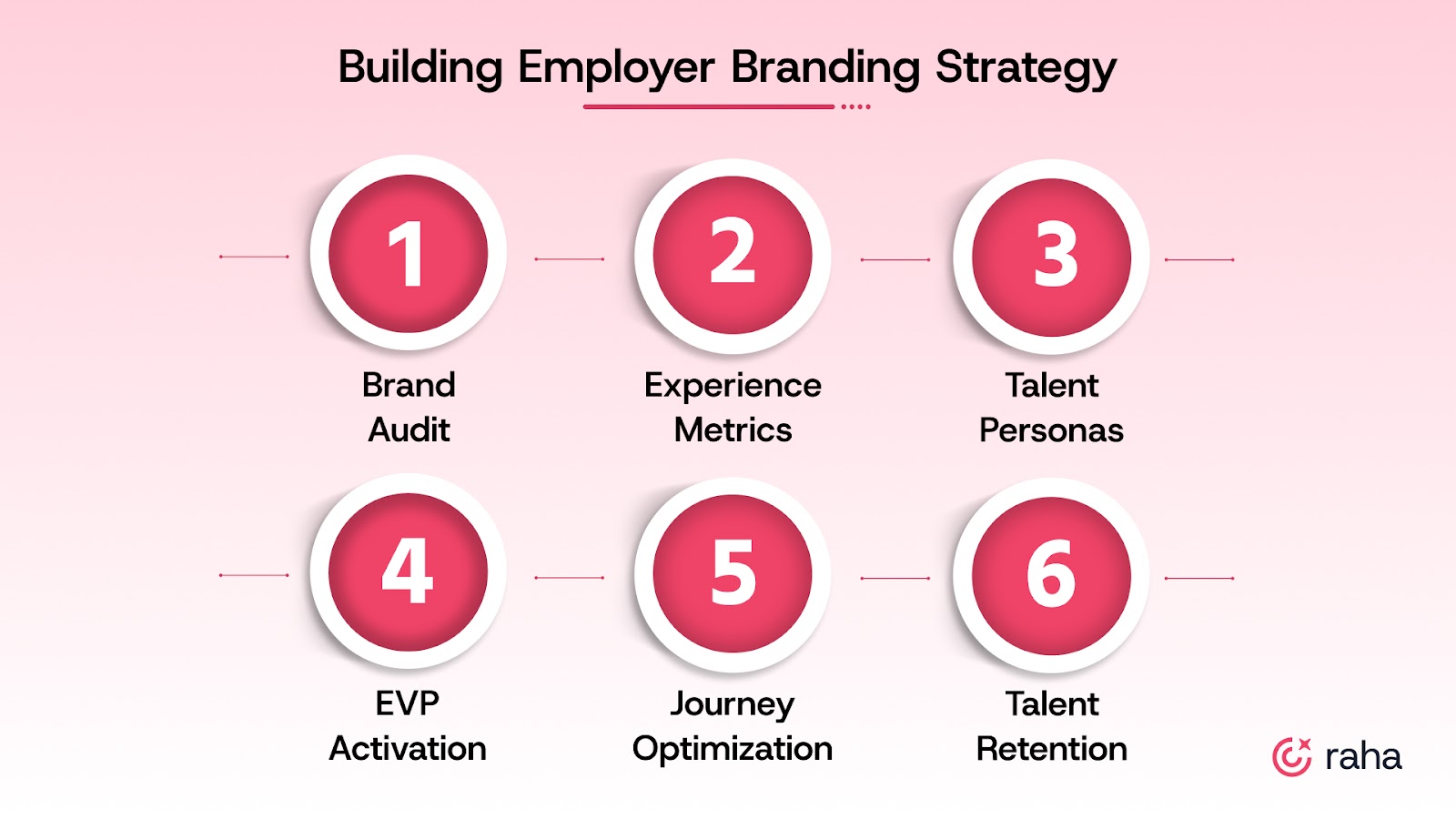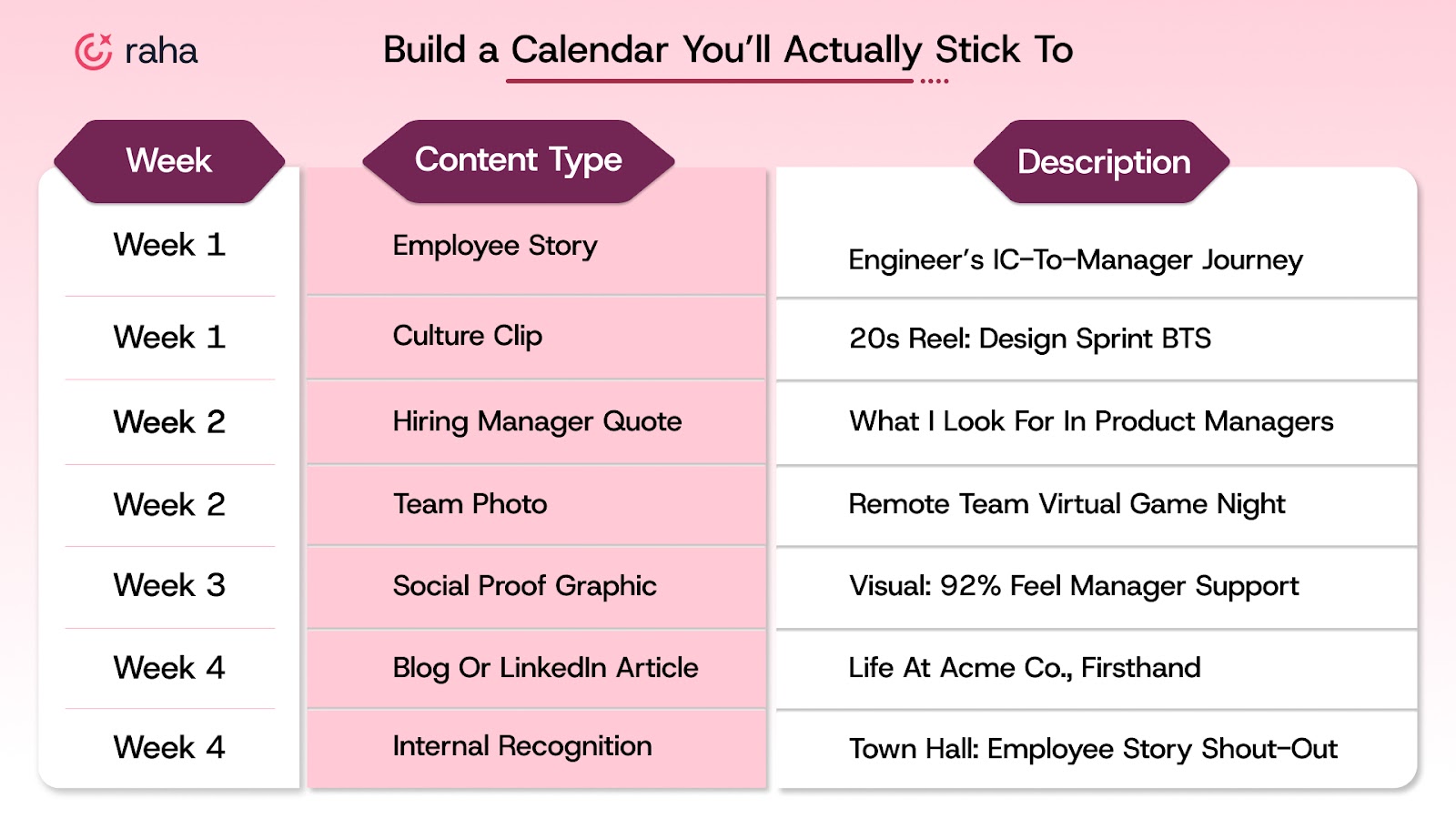
You’ve seen it happen: solid interviews, aligned expectations, a strong offer… and then the candidate passes. It wasn’t the comp or the job. They did their homework and didn’t like what they found online.
Today, candidates are researching you before you ever see their resume. In fact, 75% of job seekers check out a company’s reputation before applying.
While recruiters are juggling open roles and waiting for feedback, candidates are scanning Glassdoor, Reddit, LinkedIn, and Instagram, shaping their opinion long before the first phone screen.
If your employer brand isn’t pulling its weight, your funnel leaks before it even starts.
This guide walks you through how to build a real employer branding strategy—one that earns trust, tells the right story, and helps close top talent faster.
Key Takeaways
- A strong employer brand improves recruitment by attracting better candidates and reducing hiring costs.
- Internal and external branding must align to ensure authenticity and attract the right talent.
- A positive internal brand drives employee advocacy, which strengthens external perceptions of your company.
- Tailoring your employer branding materials to candidate personas ensures better engagement and more relevant outreach.
- Consistent evaluation and optimization of your branding strategy help keep it effective and aligned with changing talent needs.
What is Employer Branding Strategy?
At a surface level, an employer branding strategy is how you shape your reputation as an employer. But for talent teams, it’s a lever that directly impacts your pipeline, offer acceptance, and retention.
Here’s the part most people miss:
Employer branding isn’t about what you say, it’s about what candidates believe. And that belief is formed long before they talk to a recruiter.
Think of it like this:
- A great EVP won’t help if your Glassdoor is full of red flags.
- That slick careers page means nothing if interview feedback is inconsistent or disorganized.
- You can’t “position” your way out of a bad culture. Candidates will find the truth in seconds.
Done right, an employer branding strategy is the foundation that makes sourcing easier, conversion smoother, and hiring faster. It shapes how your company is talked about in group chats, LinkedIn DMs, and Sunday brunches.
However, you can’t influence perception if you don’t know where it’s coming from. That’s why every effective employer branding strategy has two sides: internal and external. And both need to be in sync.
Internal Branding: What Your People Say When You’re Not in the Room
This is the foundation. Internal branding is how your own employees experience your company's day-to-day culture, growth opportunities, and leadership transparency. If this part is broken, no amount of social posts or paid media will fix it.
Strong internal branding shows up in:
- Employee referrals (your best sourcing channel)
- Retention and engagement
- What people say on Glassdoor after they leave
External Branding: What the Market Sees
External branding is how you show up to the world. It’s the story job seekers, passive candidates, and even competitors see. Your careers page, job descriptions, recruiter outreach, interview experience, and employer review sites shape it.
Why an Employer Branding Strategy Matters
Your employer brand influences everything from recruitment to employee retention, and even your company’s overall performance and profitability. A well-established employer brand leads to higher employee engagement, lower turnover, and greater recruiting success. Here’s why that’s crucial:
- Reputation is a filter. 86% of women and 67% of men in the U.S. won’t apply to a company with a bad rep, even if the role looks perfect.
- Misalignment is costly. Nearly one in three new hires leave within the first 90 days. That’s not a sourcing issue. That’s a brand problem.
- Real voices cut through. Employee testimonials are 3x more trusted than leadership statements. Your EVP isn’t what HR says, it’s what employees share.
- Brand saves budget. Without a strong employer brand, you’ll need to pay up to 60% more to land top-tier candidates.
Your employer brand is already shaping your funnel. If you don’t take control of it, it’ll control your hiring outcomes. Let’s fix that.
6 Ways to Build Your Employer Branding Strategy
Most candidates will make up their minds about your company before you ever speak to them. It happens through Glassdoor reviews, LinkedIn posts, job descriptions, and the stories your team shares over coffee chats or Slack DMs.
The question isn’t if you have an employer brand, it’s whether it’s helping you or hurting you.
This section lays out how to take control of that narrative, build a strategy that reflects reality, and turn your brand into a tool that actually helps you hire.

1. Audit Your Current Brand and Processes
Start by getting real with where you stand. There’s no point in building a shiny external brand if your internal process is a mess.
What to check:
- Digital Footprint Analysis: What shows up when candidates Google you? (Spoiler: it's probably not what you think)
- Candidate Experience Mapping: Shadow your own hiring process. Is it smooth, or does it feel like navigating a bureaucratic maze?
- Competitor Brand Intelligence: What are your talent competitors doing that you're not?
What this improves:
- Candidate drop-off rates
- Candidate NPS
- Time-to-hire
2. Choose Metrics That Actually Reflect Candidate Experience
You can’t fix what you can’t measure. And if you’re serious about employer branding, vanity metrics won’t cut it. Here’s how to track what actually moves the needle:.
Leading Indicators (early signs your brand is landing):
- Brand Awareness: Are more candidates searching for you or engaging with your content?
- Apply Conversion Rate: Are people who see your job actually applying?
- Candidate NPS: Do candidates have a good experience, even if they’re rejected?
- Employee Advocacy: Are employees organically sharing open roles or culture stories?
Lagging Indicators (longer-term impact):
- Time to Fill: Are you hiring faster after improving your brand perception?
- Offer Acceptance Rate: Are candidates saying yes more often?
- Quality of Hire: Are new hires actually working out?
- Retention by Source: Are referrals and inbound brand leads staying longer?
What you can do:
You don’t need a 40-page dashboard. Just start tracking key events in your funnel:
- Time from application to first interview
- Drop-offs at each stage
- Which sources lead to hires that stick
Tip: After implementing screen tools like Raha AI, track the before and after. Teams using Raha cut 15+ days from time-to-hire by automating interview coordination and screening.
What this improves:
- Apply-to-interview conversion
- Source-of-hire quality
- Leadership buy-in on branding efforts
Must Read: What Is Talent Acquisition? Strategies for Stronger, Smarter Hiring
3. Build Candidate Personas That Actually Shape Outreach
You’re targeting your “top talent”. Define who that is:
- What industries or companies do they come from?
- What values matter to them (flexibility, impact, career growth)?
- What do they see when they Google you?
Use those insights to tune everything from JD tone to outreach strategy.
What this improves:
- Application volume from qualified candidates
- Offer acceptance rate
- Screening efficiency
4. Turn Your EVP into Something Candidates Can Feel
Your EVP is a story you tell over and over, across formats and channels. And you need to be consistent with that.
Keep it sharp:
- Avoid fluff — use specifics, data, and real examples.
- Let employees tell their stories, not your HR team.
- Reflect benefits beyond comp: trust, flexibility, ownership, culture.
Then make sure it shows up across:
- Job descriptions (especially “Why Join Us”).
- Careers page and social media.
- Recruiter outreach templates and onboarding decks.
What this improves:
- Quality-of-hire
- Engagement rates on job ads and social posts
- Volume of inbound interest from passive candidates
5. Streamline the Experience Behind the Brand
A strong brand means nothing if your hiring process is clunky. If it’s slow, confusing, or full of back-and-forths, top candidates will drop off, no matter how good your pitch is.
To fix this, build a faster, smarter process behind the scenes.
That’s where AI can help. With Raha AI, teams can reduce manual work and keep the hiring experience smooth:
- AI Resume Screener: Upload resumes and see key candidate data pulled into a clean, sortable view. Apply filters and see fit scores to focus on the most relevant profiles.
- AI Interviewer: Let Raha handle initial screening calls. It asks role-specific questions, captures responses, and gives recruiters a snapshot of each candidate before the interview.
- AI Interview Coordinator: Raha handles the back-and-forth of scheduling, checking availability, sending reminders, and managing reschedules across all stakeholders.
What this improves:
- 84% faster interview scheduling
- Hire 50% faster
- 90% of interview management tasks are automated
Must read: Artificial Intelligence in HR: Use Cases and Key Benefits
6. Don’t Just Attract—Keep Them
A strong employer brand doesn’t stop at offer acceptance. It shapes how people feel six months in. Because the truth is, if employees don’t feel engaged or valued, your employer brand eventually breaks, no matter how polished your messaging is.
What actually moves the needle:
- Visibility: Celebrate wins, promotions, team growth
- Growth: Invest in L&D and make internal mobility real
- Flexibility: Show trust in how people work, not just what they produce
- Purpose: Help teams connect their work to the bigger picture
What this improves:
- 6-month retention rate
- Referral volume
- Glassdoor and eNPS scores
How to Actually Execute Your Employer Branding Strategy
You’ve got the framework, the EVP, and the buy-in. Now it’s about putting it into action without getting stuck or overcomplicating the process. Follow these steps:
1. Speak to the Right People, Not Everyone
Most employer branding falls flat because it tries to speak to everyone at once. The best brands feel personal. Start by aligning your messaging with the real people you’re trying to hire, not just vague job titles.
2. Build a Calendar You’ll Actually Stick To
When hiring ramps up, content is usually the first thing to slip. A simple, realistic calendar helps your team stay on track, even when things get busy. Here’s a sample content calendar to get you started.

When hiring ramps up, content is usually the first thing to slip. A simple, realistic calendar helps your team stay on track, even when things get busy. Here’s a sample content calendar to get you started.
3. Clear the Roadblocks Before They Slow You Down
Misaligned teams, slow approvals, or unclear roles can quietly derail your employer branding. Watch for these friction points early and make sure there’s shared ownership.
4. Treat Branding Like a Product: Test, Ship, Iterate
Use data from job ads, social posts, and candidate surveys to test what resonates. Be ready to adjust based on what candidates actually respond to.
Your Employer Brand Already Exists, Make It Work With Raha AI
A strong employer brand doesn’t come from big campaigns or clever taglines. It comes from follow-through: how you show up in interviews, how quickly you move, how clearly you communicate. That’s what candidates remember.
So, if you’ve got the right message but your process is slowing you down, it’s time to fix it.
Raha AI helps you do that. From resume screening to first-round interviews and full interview coordination, it automates the parts of hiring that hurt your brand the most when they break.
FAQs
1. Why is employer branding important for recruitment?
Employer branding directly affects how potential candidates perceive your company, making it easier to attract high-quality talent. A strong brand can reduce hiring costs, speed up recruitment, and improve employee retention.
2. How do I improve my internal employer brand?
Focus on employee engagement, transparency, and growth opportunities. Empower your employees to become brand advocates, and ensure your company culture is something worth talking about.
3. What is the difference between internal and external employer branding?
Internal branding is about the employee experience, ensuring your current workforce feels valued and supported. External branding is how the public (including potential candidates) views your company, which directly influences whether they’ll apply.
4. How can technology help in employer branding?
Tools like Raha AI automate routine tasks like resume screening and interview scheduling, allowing you to hire 50% faster and improve the candidate experience. This not only enhances efficiency but also supports your employer brand by showing candidates you value their time.
5. How often should I update my employer branding strategy?
Employer branding is an ongoing process. You should regularly assess your internal and external branding strategies, test your messaging, and be open to course-correcting when necessary to stay competitive in the talent market.

